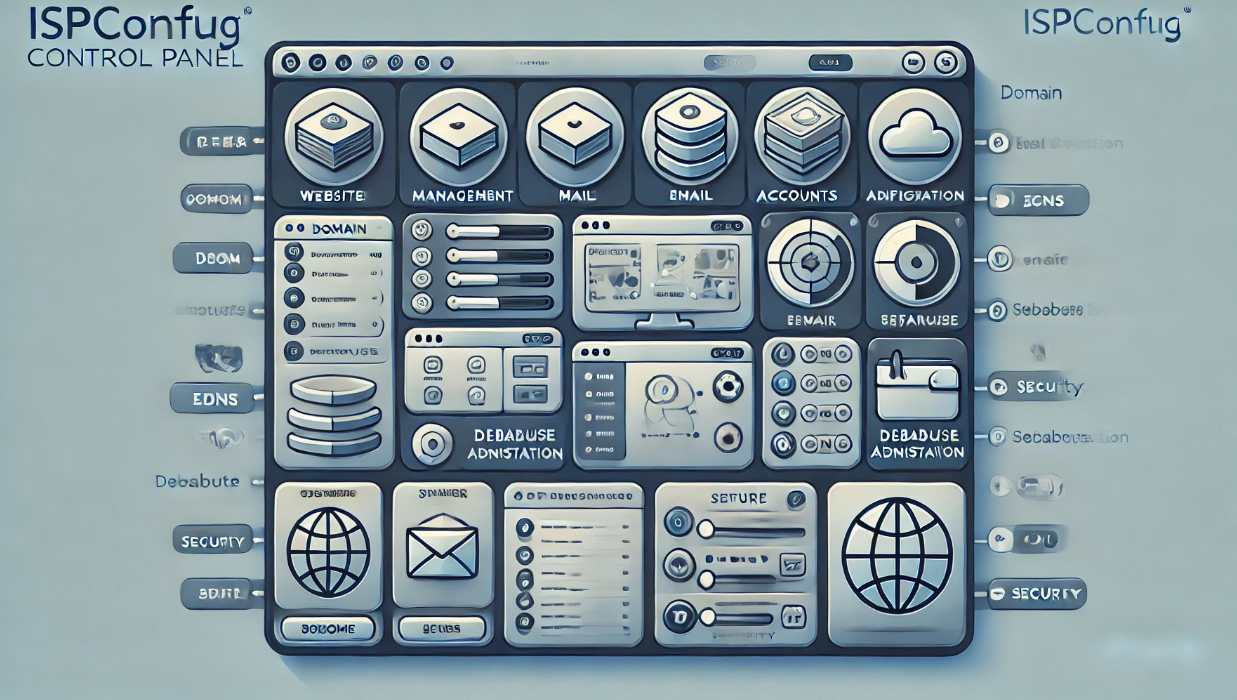⚡ ISPConfig: A Free and Powerful Server Management Tool
ISPConfig is an **open-source web hosting control panel** that allows you to manage **websites, email, FTP, databases, DNS, and more** from a single interface. It’s a great **free alternative to cPanel and Plesk**.
1. Why Choose ISPConfig?
✅ Key Features of ISPConfig
- ✅ Multi-Server Management – Control multiple servers from one panel.
- ✅ Web Hosting Control – Manage websites, FTP, and databases.
- ✅ Mail Server Management – Supports Postfix, Dovecot, and SpamAssassin.
- ✅ DNS & Firewall Management – Configure DNS records and security settings.
- ✅ Multi-User Access – Admin, reseller, and client accounts.
- ✅ Supports Multiple Web Servers – Works with Apache, Nginx, and Lighttpd.
️ 2. System Requirements for ISPConfig
- ✅ OS Supported: Debian 10/11, Ubuntu 20.04+, CentOS 7+, AlmaLinux, Rocky Linux.
- ✅ CPU: Minimum 2 cores.
- ✅ RAM: 2GB (4GB recommended).
- ✅ Disk Space: 20GB minimum.
- ✅ Ports Required: 80, 443, 8080.
️ 3. How to Install ISPConfig on a Linux Server
✅ Step 1: Update Your Server
sudo apt update && sudo apt upgrade -y # Ubuntu/Debian
sudo yum update -y # CentOS/Rocky/AlmaLinux
✅ Step 2: Download and Install ISPConfig
wget -O ispconfig-ai.sh https://get.ispconfig.org
chmod +x ispconfig-ai.sh
sudo ./ispconfig-ai.sh
✅ Step 3: Access ISPConfig Panel
https://your-server-ip:8080
⚙️ 4. Setting Up ISPConfig for the First Time
✅ Step 1: Log In to ISPConfig
- **Username:** admin
- **Password:** (Set during installation)
✅ Step 2: Configure Server Settings
- ✔ Set up **hostname & admin email**.
- ✔ Configure **DNS, web, and mail server settings**.
- ✔ Create **user roles (admin, reseller, client)**.
5. Practical Examples: Using ISPConfig
✅ Adding a Website & Domain
- 1️⃣ Go to **Sites** → Click **”Add New Website”**.
- 2️⃣ Enter your **domain name** (e.g., `example.com`).
- 3️⃣ Choose **web server settings (Apache/Nginx)**.
- 4️⃣ Click **Save** → Your website is now hosted!
✅ Installing WordPress in ISPConfig
- 1️⃣ Go to **Sites** → Click **”Web Apps”**.
- 2️⃣ Select **WordPress** and choose your domain.
- 3️⃣ Click **Install** → WordPress is now ready!
✅ Setting Up Email Accounts
- 1️⃣ Go to **Email** → Click **”Add Email Domain”**.
- 2️⃣ Enter your **domain name** (e.g., `example.com`).
- 3️⃣ Click **”Create Mailbox”** and set up email users.
- 4️⃣ Use **Webmail (Roundcube) or an email client** to send/receive emails.
✅ Enabling SSL/TLS Security
- 1️⃣ Go to **Sites** → Click **SSL/TLS Certificates**.
- 2️⃣ Select **Let’s Encrypt** (Free SSL).
- 3️⃣ Click **Install** → Your website is now secured with HTTPS.
Final Thoughts: Why Use ISPConfig?
- ✅ **Completely Free & Open Source** – No licensing costs.
- ✅ **Multi-Server Management** – Control multiple servers from one panel.
- ✅ **Built-in Security** – Supports SSL, firewall, and brute-force protection.
- ✅ **Customizable & Lightweight** – Runs efficiently on VPS & dedicated servers.
Looking for a free and powerful server management tool? Try ISPConfig today!

